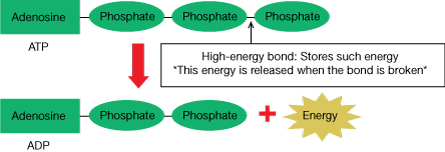Module 5 Intro
1. Module 5 Intro
1.4. Page 2
Module 5—Photosynthesis and Cellular Respiration
 Explore
Explore
 Read
Read
In Science 10 you studied cell theory, cell structure, and cell function. In this lesson you will build on those basics toward a greater understanding of cellular respiration and photosynthesis.
If you need to review cells, read pages 154 and 155 of the textbook. In particular, review the labelled diagrams of cells so that you have a better idea of where photosynthesis and cellular respiration take place. Once you have reviewed these pages, complete the following Try This.
 Try This
Try This
TR 1. The Cell
Can you identify the mitochondrion and the chloroplast? Scroll over these two diagrams to see if you can correctly identify these structures. You will be learning more about these structures as you move through this module.
 Read
Read
The Chloroplast and the Mitochondrion
Chloroplasts and mitochondria have unique designs that allow them to carry out photosynthesis and cellular respiration. Plant cells have both a chloroplast and a mitochondrion, while animal cells contain only a mitochondrion.
 Try This
Try This
TR 2. The Chloroplast and the Mitochondrion
Go to your Module 5: Lesson 1 Assignment. Use the information provided on pages 164 and 165 of the textbook to label the structures of the chloroplast and mitochondrion. On your diagram, add descriptions of the function of the parts you have labelled.
 Read
Read
passive transport: no energy required
diffusion: a process in which molecules move from areas of high concentration to low concentration
facilitated diffusion: a process in which larger molecules need the help of proteins in cell walls to move from areas of high concentration to low concentration
osmosis: the diffusion of water across a semipermeable membrane
active transport: a process that requires energy from ATP to move substances against the concentration gradient
endocytosis: a process in which cell membranes engulf a substance and pinch off inside the cell
pinocytosis: a process in which the cell wall engulfs liquids and their solutes and pinches off inside the cell
phagocytosis: a process in which the cell wall engulfs a large particle, such as bacteria or a blood cell, and pinches off inside of the cell
exocytosis: a process in which a vacuole containing substances from inside a cell (cytoplasm) fuses with the cell wall and the contents are released outside of the cell
Cells must transport molecules produced during photosynthesis and cellular respiration. Cells must also transport the required compounds for these two processes. Note these types of cellular transport:
- passive transport
- diffusion
- facilitated diffusion
- osmosis
- active transport
- endocytosis
- pinocytosis
- phagocytosis
- exocytosis
These methods of transport move substances across the cell membrane. Membranes exist in every organelle. Transport of materials happens across the membranes of the mitochondrion and the cell. Using information from the glossary definitions and pages 156 to 159 of the textbook, try the following Self-Check.
 Self-Check
Self-Check
SC 1. Complete this Self-Check activity.
 Self-Check
Self-Check
SC 2. What is the purpose of facilitated diffusion?
SC 3. Where does a cell get energy for active transport?
 Self-Check Answers
Self-Check Answers
SC 2. Facilitated diffusion moves large molecules down the concentration gradient. These molecules are unable to diffuse across the cell membrane because of their size.
SC 3. Cells get energy from ATP (adenosine triphosphate) when phosphate bonds are broken.
 Read
Read
What is ATP?
ATP (adenosine triphosphate): a
high-energy phosphate molecule that provides and stores the energy required for cellular functions
Photosythesis produces the energy-rich chemical compound of glucose. The by-products of photosynthesis are oxygen and some ATP. Cellular respiration breaks down energy-rich compounds such as glucose. Breaking down the chemical bonds in glucose generates ATP. Cellular respiration generates more ATP than photosynthesis.
ATP is the energy currency of cells—when cells need energy, they spend ATP. You will learn more about ATP synthesis later on in this module.

Read “ATP and Cellular Activity” on page 163 of the textbook.
 Self-Check
Self-Check
SC 4. What is ATP used for?
SC 5. How does ATP supply energy to the cell?
 Self-Check Answers
Self-Check Answers
SC 4. ATP is used for active transport, cell division, movement, muscle contraction, and the synthesis of proteins and other molecules.
SC 5. Energy is released when the bond to the third phosphate group breaks. This energy fuels cellular function.